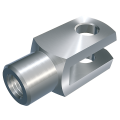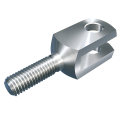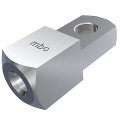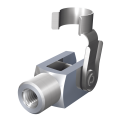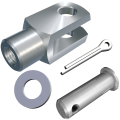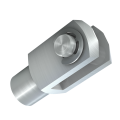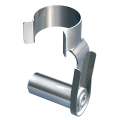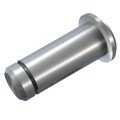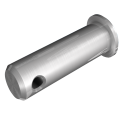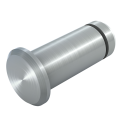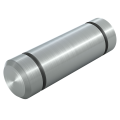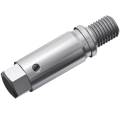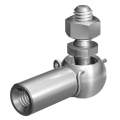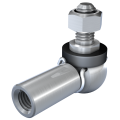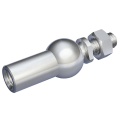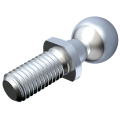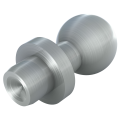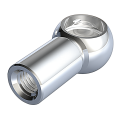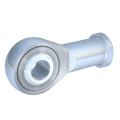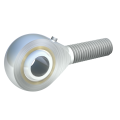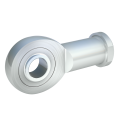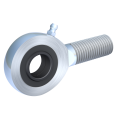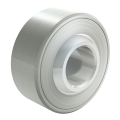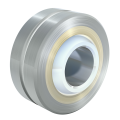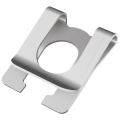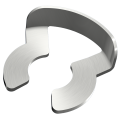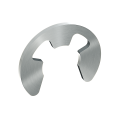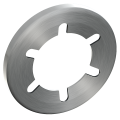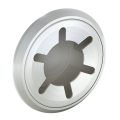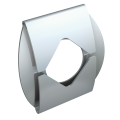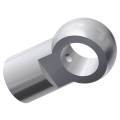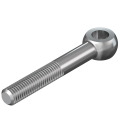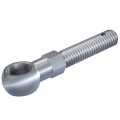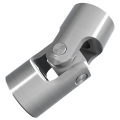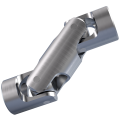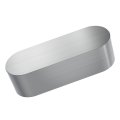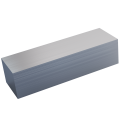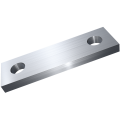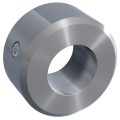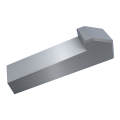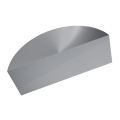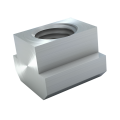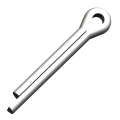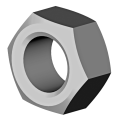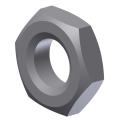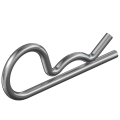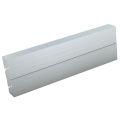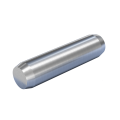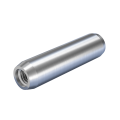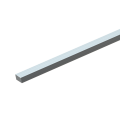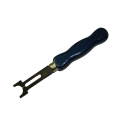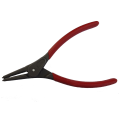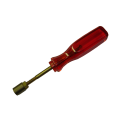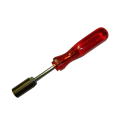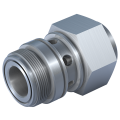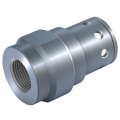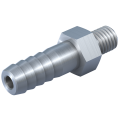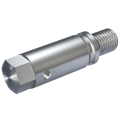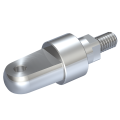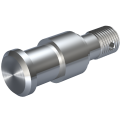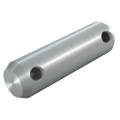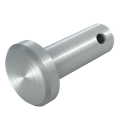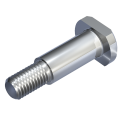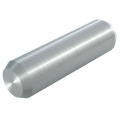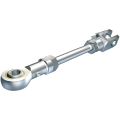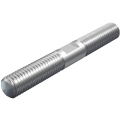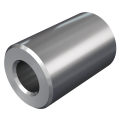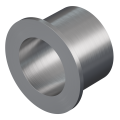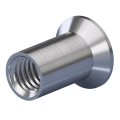Fast-track this part (max. 400 units) through our production facility. Shorten the delivery time by 1-2 working days. We are currently exclusively testing this delivery service for Germany.
incl. VAT
plus shipping costs
To cancel your filter settings again, click on the "Clear" button below the table.
You can display product details, including the eShop function and 3D model , by clicking in the row corresponding to the required article.
1. Product description
The Cotter pin DIN EN ISO 1234 (formerly DIN 94) is an essential fastening element in the world of mechanics and construction, playing a pivotal role in securing and fixing bolts, shafts, axles, nuts, and other connecting elements.
Its simple yet effective design makes it an indispensable tool in preventing unintended loosening of connections due to externally applied forces such as vibrations or dynamic movements. This traditionally proven securing element is a long, thin metal pin that features a double loop at one end, which after installation is passed through a hole drilled through the components to be secured, and its open end is bent over to ensure a reliable lock. The application is quick and straightforward, as no special tools are required - normal tools such as pliers, knives, screwdrivers, etc., can be used for bending.
The cotter pins are available in a wide range of lengths and diameters, each size tailored to the individual requirements of various applications. Moreover, a choice can be made between different materials including steel, stainless steel, or A4-grade stainless steel. This, combined with surface treatments for additional corrosion protection, makes the cotter pin a versatile solution, used in both everyday and highly specialized applications, and employed across numerous industries.
2. Product details
Size: 1.6x8 - 10x90
Material: Steel, stainless steel, stainless steel A4 quality
Surface: bright, electr. galvanized white
3. Application Areas & Compatibility
The Cotter pins DIN EN ISO 1234 (formerly DIN 94) are used in a wide range of application areas, highlighting their versatility and universal compatibility. These applications range from basic machine construction to specialized areas where safety and reliability are essential criteria.
Machinery and Plant Engineering: Almost every machine or plant contains moving parts that need to be securely connected. Cotter pins ensure that nuts, axles, shafts, or bolts do not loosen even with vibrations, thus contributing to the durability and reliability of the machines.
Agricultural Equipment: The robust nature of agricultural equipment requires fasteners that can withstand harsh conditions. Cotter pins are used in tractors, combine harvesters, and other machines, where they are especially valued for their resistance and ease of replacement.
Marine and Offshore Applications: In marine and offshore technical applications, cotter pins made of corrosion-resistant materials provide reliable connections that withstand constant contact with saltwater and extreme weather conditions.
Construction and Architecture: Cotter pins are also used in the construction industry, for example, for securing scaffolding, safety ropes, and other load-bearing components. Their ease of use and reliability are advantageous here.
Renewable Energy: In wind turbines and other facilities for generating renewable energy, cotter pins secure critical connection points that require maximum reliability to ensure efficiency and safety. Overall, these diverse application areas emphasize the universal applicability of cotter pins according to DIN EN ISO 1234.
4. Advantages and Benefits
Enhanced Safety: Cotter pins offer a highly reliable securing method that prevents fasteners from loosening under vibration or dynamic load. This significantly contributes to operational safety and longevity of machines and structures.
Simplicity and Efficiency of Installation: A key advantage of these cotter pins lies in their simplicity of handling. They require no special tool for installation or removal, saving time and enabling quick and efficient application. Their intuitive use greatly simplifies maintenance and repairs.
Versatile Applications: Thanks to a wide selection of sizes and materials, cotter pins can be flexibly used across a broad range of industries and application areas.
Cost Efficiency: Due to their simple design and the resultant ease of manufacture, cotter pins are among the most economical securing elements. They offer an excellent cost-performance ratio and help to keep total costs low in production and maintenance processes.
Reusability: Provided they are undamaged, cotter pins can be reused, making them an environmentally friendly and cost-saving option. This reusability also contributes to waste reduction and resource conservation.
Reliability under Extreme Conditions: Depending on the selected material, cotter pins can offer excellent resistance to corrosive environments, high or low temperatures, and other challenging operating conditions. Stainless steel variants are ideally suited for applications in harsh or chemically active environments due to their corrosion resistance. Conversely, galvanized steel offers a more cost-effective alternative with respectable rust and corrosion protection, making it suitable for less demanding conditions.
Diversity: In terms of dimensions and sizes, DIN EN ISO 1234 (formerly DIN 94) cotter pins cover a wide spectrum and match a variety of shaft diameters. Precise measurement of these cotter pins is crucial for a secure fit and optimal performance. Selecting the right size is of utmost importance to avoid mechanical failures or insufficient fastenings.
5. Assembly and Installation
The assembly and installation of cotter pins according to DIN EN ISO 1234 (formerly DIN 94) is a process known for its simplicity and efficiency. It does not require any special tools or complicated procedures.
Step 1 - Preparation of the fasteners: Before a cotter pin can be inserted, it must be ensured that the parts to be secured, such as bolts, shafts, or axles, are correctly positioned and installed. It is important that the hole intended for the cotter pin is clean and free of obstacles to ensure a smooth installation.
Step 2 - Selection of the suitable cotter pin: The selection of the suitable cotter pin is crucial for the effectiveness of the locking. The length and diameter of the cotter pin must be adapted to the size of the hole and the strength of the elements to be secured. A cotter pin that is too small or too large can compromise the safety and reliability of the connection.
Step 3 - Inserting the cotter pin: Once the suitable cotter pin has been selected, it is pushed through the intended hole. The end with the double fold should be inserted first to ensure optimal locking.
Step 4 - Bending the ends of the cotter pin: Once the cotter pin is fully inserted, the ends on the opposite side are bent over. Use pliers, a knife, screwdriver, scissors, etc., to bend one end of the pin upwards and the other end downwards. The ends should be bent in such a way that they move away from the bolt or shaft and ensure a secure connection. This prevents the cotter pin from slipping out of the connection. The ends can be bent either in the same direction or apart, depending on requirements and accessibility. In some applications where particularly secure anchoring is required, the ends can additionally be wrapped around the element to be secured.
Step 5 - Checking the installation: After the installation, the locked connection should be checked for strength and security. A correctly installed cotter pin connection should not allow any movement between the secured elements and be secured against accidental loosening.
Maintenance and replacement: Although cotter pins provide a permanent locking solution, they can be easily removed and replaced if necessary.
This is particularly useful in maintenance and repair situations where fast access to the secured components is required.
Periodic inspections are essential to identify wear or corrosion that could jeopardize the integrity of machines. Such inspections should evaluate corrosion resistance, in the case of stainless steel options, and check whether the pins remain securely in place over time. Inspecting for signs of significant wear or damage is crucial, with immediate replacement recommended to prevent potential failures.
6. Accessories and Extensions
Cotter pins DIN EN ISO 1234 (formerly DIN 94) offer a valuable extension to their range of applications when used in combination with clevis joints and the washer DIN 125 form A. Specifically, the clevis joints according to DIN 71751 in form A or those that are similar to DIN 71751 form A, but with additional thread, can be effectively combined with the cotter pins.
This combination opportunity opens up a multitude of possible applications in mechanical constructions and systems where freedom of movement and adjustability are of crucial importance. Coupling cotter pins DIN 94 with clevis joints according to DIN 71751 enables a quick and secure exchange or adjustment of the connecting elements without the need for a complete disassembly of the construction.
Cotter pins DIN 94 can also be used in conjunction with protective sleeves to cover the outer ends of the pins after they have been pushed through the hole and bent. These sleeves not only protect against sharp edges and prevent injuries but can also help to prevent the ingress of dirt and moisture into the hole, thereby increasing corrosion resistance.
Frequently Asked Questions (FAQ)
What are the main functions of Cotter pins DIN EN ISO 1234 (formerly DIN 94)?
What materials and sizes are available for Cotter pins?
In which industries are Cotter pins particularly used?
What advantages do Cotter pins DIN EN ISO 1234 offer?
How is the assembly and installation of cotter pins carried out?
Can cotter pins be reused?
How should cotter pins be stored?
What safety aspects should be considered when using cotter pins DIN EN ISO 1234?
- Selecting the suitable cotter pin size and material for the specific application.
- Proper installation to ensure the cotter pins effectively secure.
- Regular inspection of the cotter pins for signs of wear or damage.
- It is also important to wear appropriate protective gloves to avoid injuries from sharp edges when bending or installing the cotter pins.

